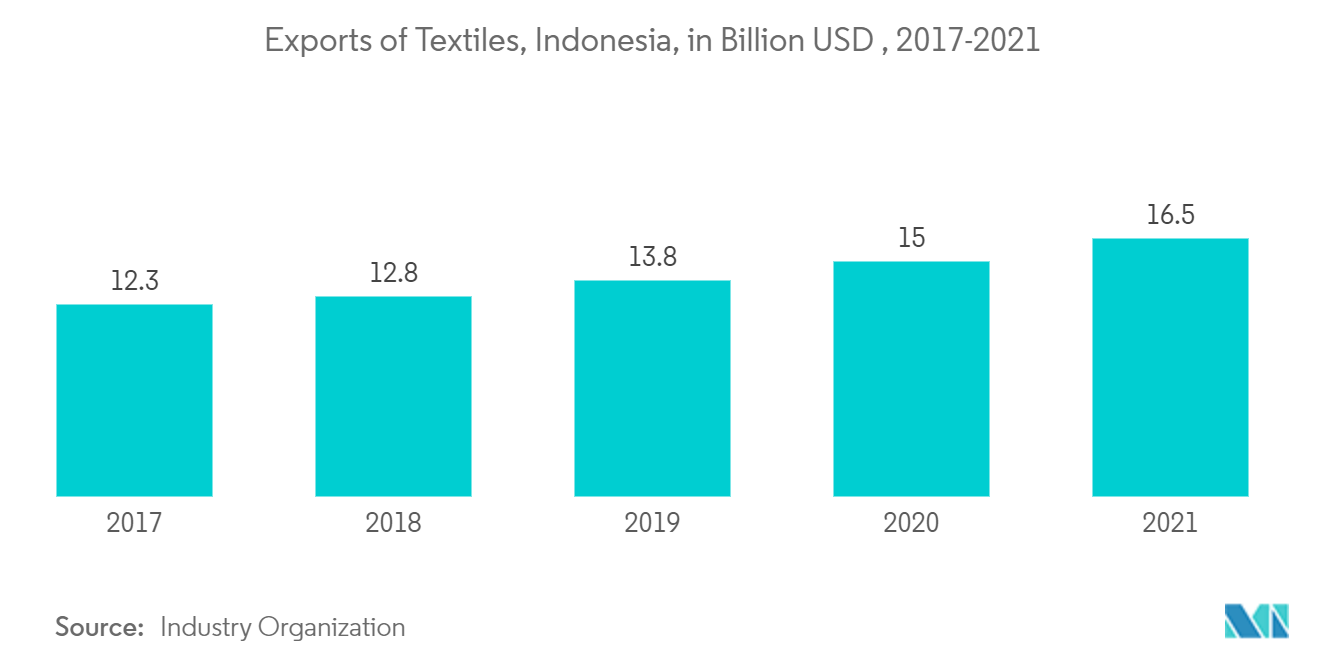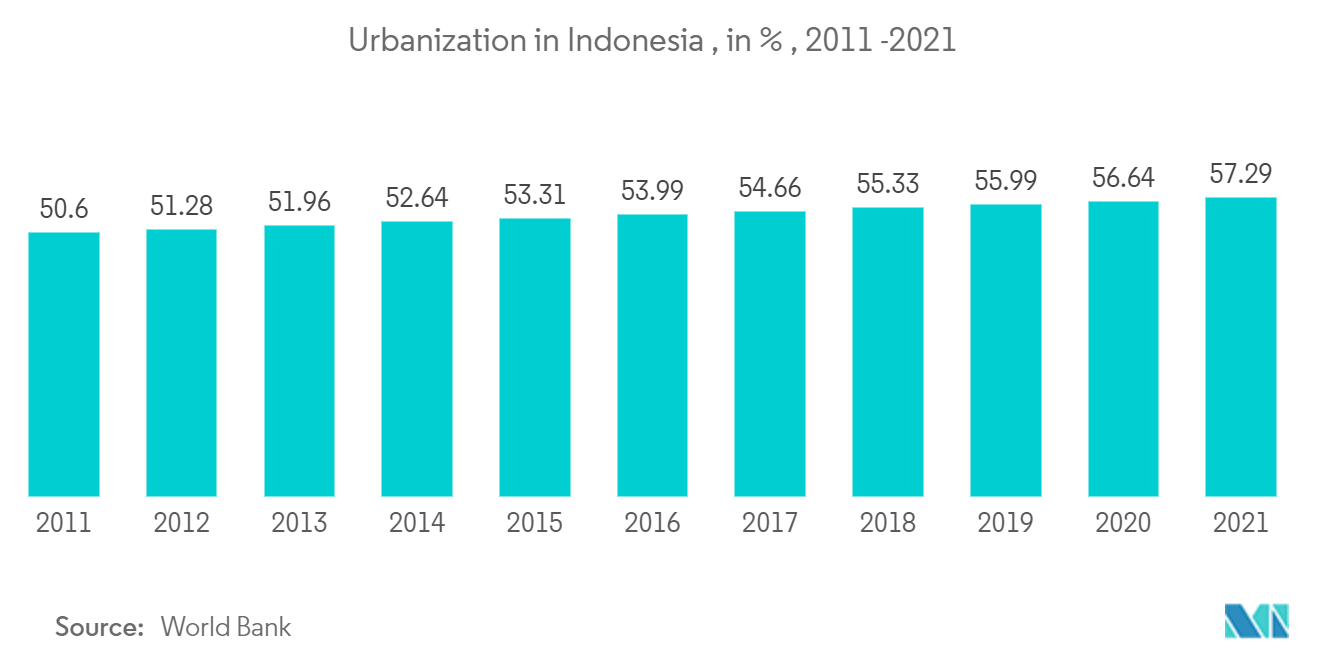Market Trends of Indonesia Textile Manufacturing Industry
This section covers the major market trends shaping the Indonesia Textile Manufacturing Market according to our research experts:
Increase in Exports driven by the Trade Agreements Boosting the Market
Textiles and textile products produced foreign money with an export value of USD 13.02 billion, according to Ministry of Industry data. As of July 2022, the industry had an export value of USD 6.08 billion, accounting for 5.51% of total exports. Textile exports are expected to surpass USD 14 billion by the end of 2022, according to the ministry. These figures put Indonesia among the top 10 textile and textile product exporters in the world, with China (the world's biggest textile producer, accounting for over half of global textile output), India, the United States, Brazil, and Thailand.
Indonesia's textile industry is one of the top ten contributors to the nation's manufacturing sector, accounting for 6.7 % of total production. Indonesia is 12th among the leading textiles and apparel exporters in the Association of Southeast Asian Nations (ASEAN) region. Indonesian textile products are shipped in huge amounts to the Middle East and Africa, which has created a notable positive impact on the textile manufacturing market in Indonesia. The country is trying to expand its trade with the Muslim world to tap new export markets and boost trade. The Muslim world has started giving preference to Indonesia for textiles against China.
The country's stable economy, efforts in expansion, and efforts to meet new-fashion demands are some of the factors that have attracted more investment in this industry. Australia and Indonesia have signed the Indonesia-Australia Comprehensive Economic Partnership Agreement. It is reported that the textile industry of Indonesia is expected to benefit the most from the agreement. An increase in exportation to major countries like the United States, the European Nations, and the Middle East has led to the rapid development of the textile manufacturing industry.
The country now is poised to outpace Thailand and Malaysia as a major regional manufacturing and export hub, and investors are increasingly choosing Indonesia over China, Thailand, and Malaysia, drawn in by the country's relative stability, sizeable low-cost labor pool, and large domestic market.

Growing Urbanization is Driving the Market
In 2021, metropolitan regions and cities housed 57.29 percent of Indonesia's total population. While urbanization in Indonesia has been slower than in many other nations throughout the world, it is presently moving at a rapid pace. Indonesia's home textile market is anticipated to grow at an increased rate due to the growing fashion sensitivity of urban consumers. Rapid urbanization and industrialization have resulted in improvements in the standard of living along with an increase in the disposable income of the population.
These are some factors projected to support the revenue growth of the Indonesian textile manufacturing industry. The country's population is expected to climb much higher. Indonesian Ministry reports also state that the birth rate in Indonesia is much higher than the death rate (except during the COVID-19 period). This is the major reason for population growth in Indonesia.
With the increase in population and the accompanying changes in consumer trends, the demand for different varieties of textiles is expected to surge. With the increasing availability of wide varieties of clothing in every sector and for every purpose with different fabrics available, the market is gaining strong attraction among consumers. Consumers want to explore the market for different varieties and cost-availability options.


